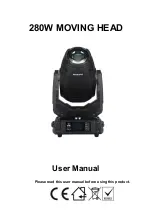
Multi-Echo EPI
Page 8 of 9
Numaris/4 VA21B
Separate Correction
: In the source code of the sequence card a new parameter
‘Separate Correction’ has been introduced. If this parameter is enabled (during
compilation) each echo image is preceded by a new set of navigators used for the
Nyquist ghost correction by the reconstruction. If the feature is disabled the same
correction is used for all echo-images. The echo times are somewhat shorter when
this feature is disabled, however, in general the image quality is better with the
separate correction enabled (especially for high imaging bandwidth). In rare cases
the signal in the later echoes is too low and the reconstruction introduces artifacts in
the images (small noisy stripes in the image) if this feature is selected. Please contact
the developer if changes are needed.
T2*-Fit (parameter not shown)
: This new feature allows online calculation of I0- and
T2*-maps from the echo images according to the model function shown in 1.2. I0 and
T2* are determined for each voxel who’s intensity exceeds 8% of the maximum
intensity in the first echo. I0 and T2* of voxels with a signal intensity below this
threshold are set to 0.
This option is automatically and only enabled when
motion correction is selected
. The resulting T2*-maps are scaled such that an
image intensity of 1000 corresponds to a T2* of 100ms. T2* is forced to lie within
physiological limits (0<T2*<333ms). Values higher than 333ms are set to 334ms to
avoid very large signal intensity differences in case of fitting errors and allow a T2*-
resolution of 0.1ms without overflows. Therefore, T2* maps of phantoms with very
long T2 and good homogeneity may be calculated falsely.
The T2*-fit is only
performed when Mosaic-images are created (for more than 1 slice)!
Motion Correction
: Similar to the motion correction in the a_ep2d_mosaic sequence
a full 3D motion correction can be performed online. In the Multi-Echo EPI sequence
this option also enables the T2*-Fit since the parameter maps are needed for motion
correction. For most accurate results the motion correction is based on the I0-maps,
which are used to determine the motion parameters. Subsequently these parameters
are applied to reorient the T2*-maps. Only the motion corrected T2*-maps are written
to the database together with the original images.
The
PACE
-variant of the sequence (separate sequence: os_mepi2d_pace_VA21)
allows prospective motion correction. Thus, the volume is rotated and shifted after
each measurement to ensure acquisition in the same patient based reference frame.
Residual motion is corrected for in the processing. This option is only enabled when
the motion correction is selected, which in turn enables the T2*-fit (which is
necessary for motion correction (see above). Be aware that the prospective motion
correction stops if the motion between two scans is too large (as in the product EPI-
PACE sequence).
Interpolation
: The interpolation should be set to ‘k-Space’! (see 3D Filter)
3D Filter
: The filter has the same function as in standard EPI (remember: smaller
values cause stronger spatial filtering!).



























